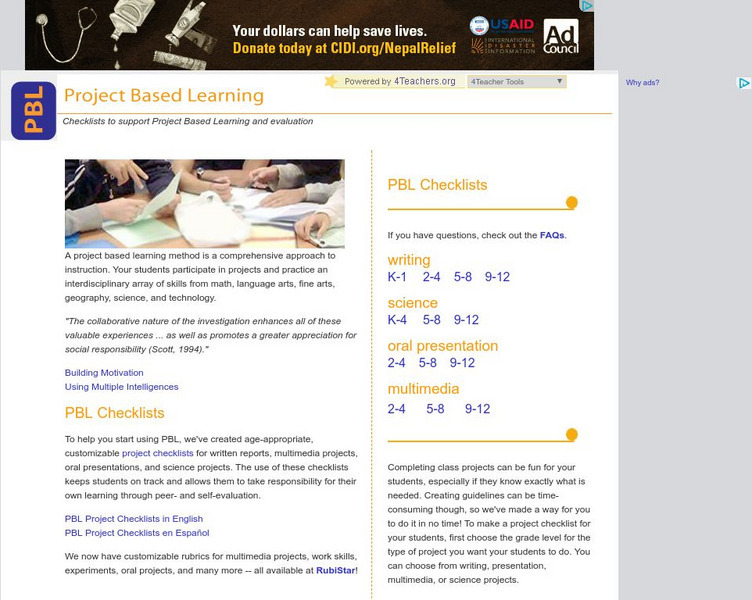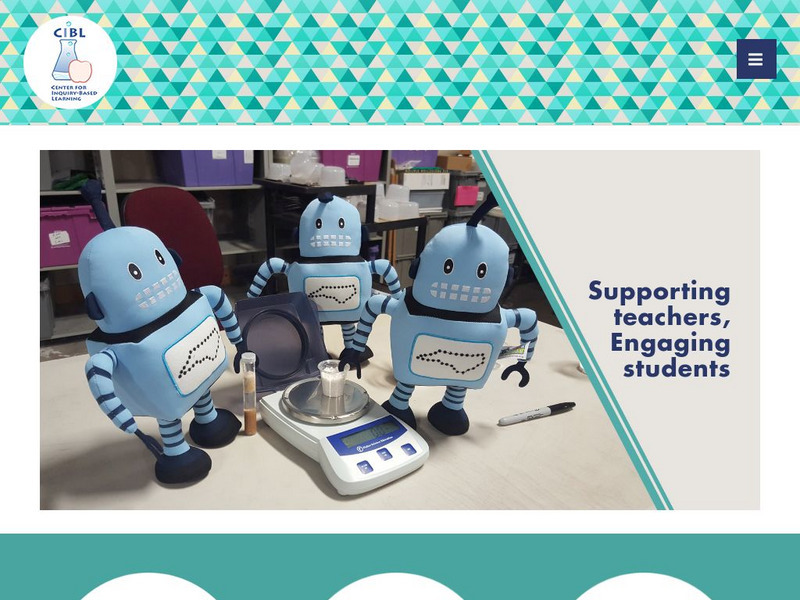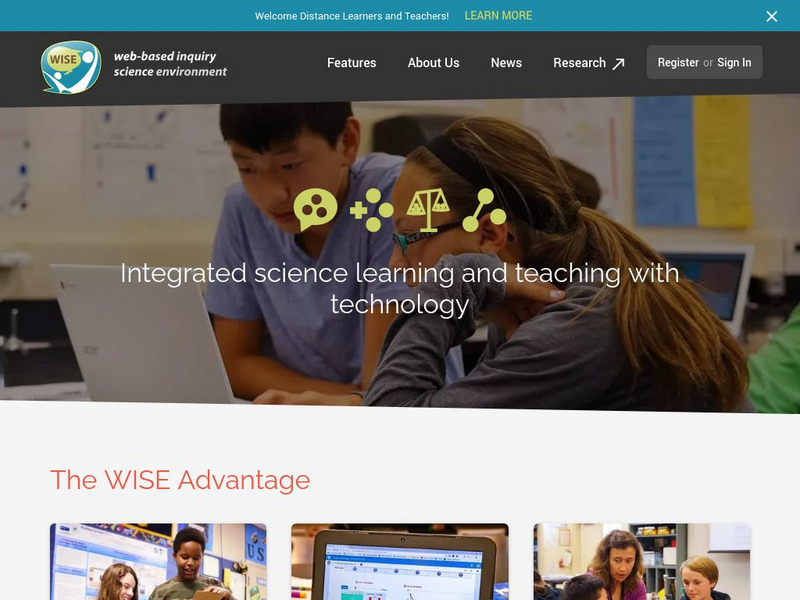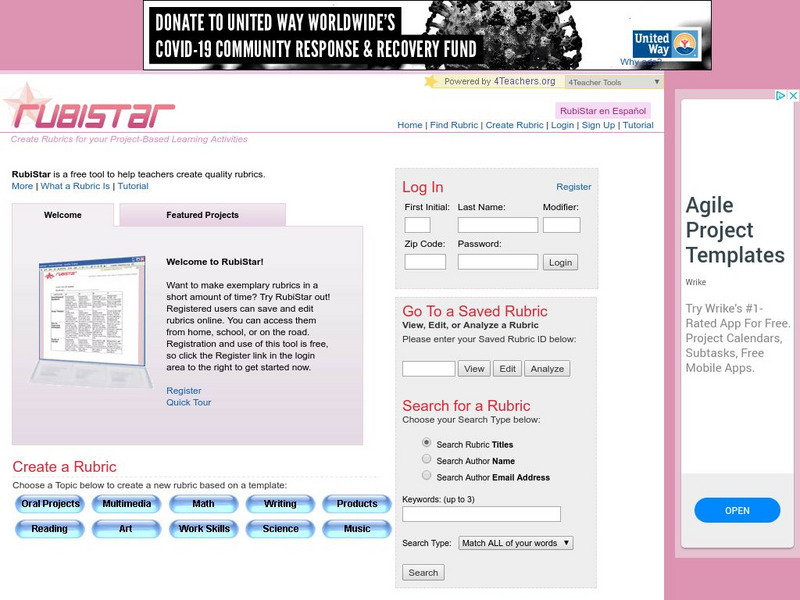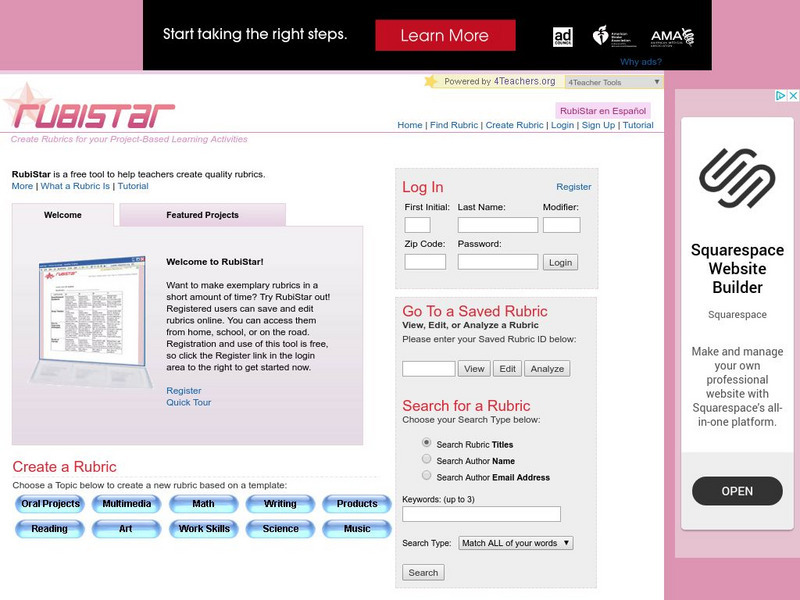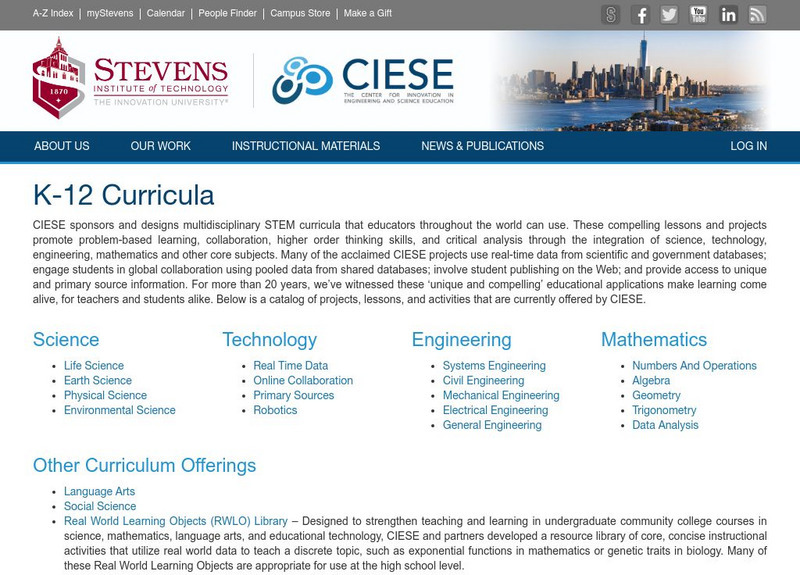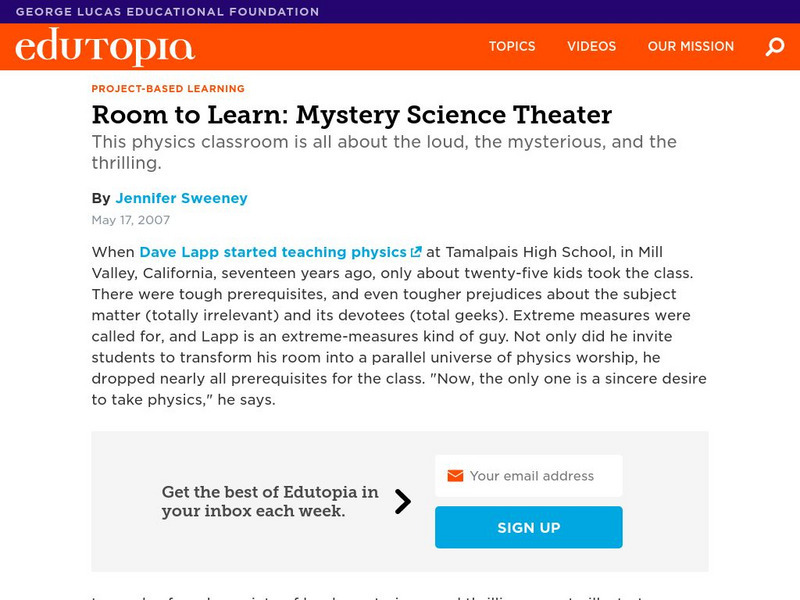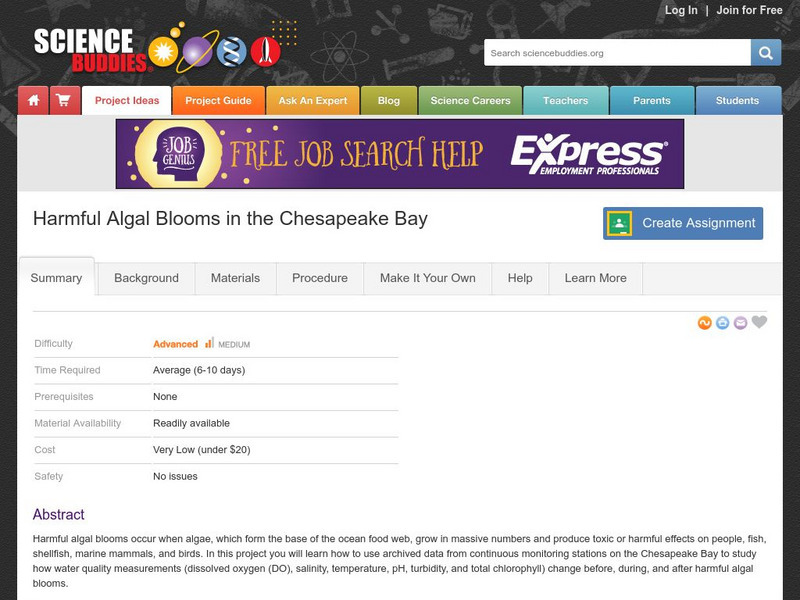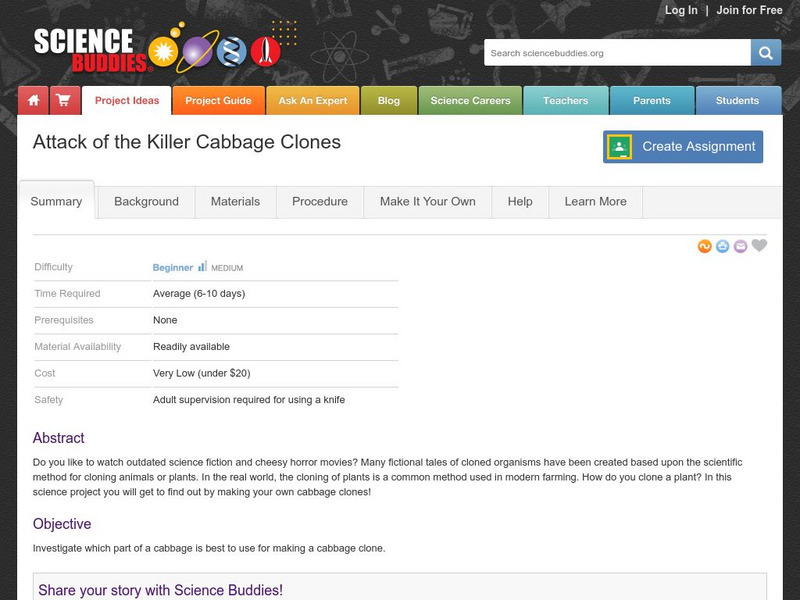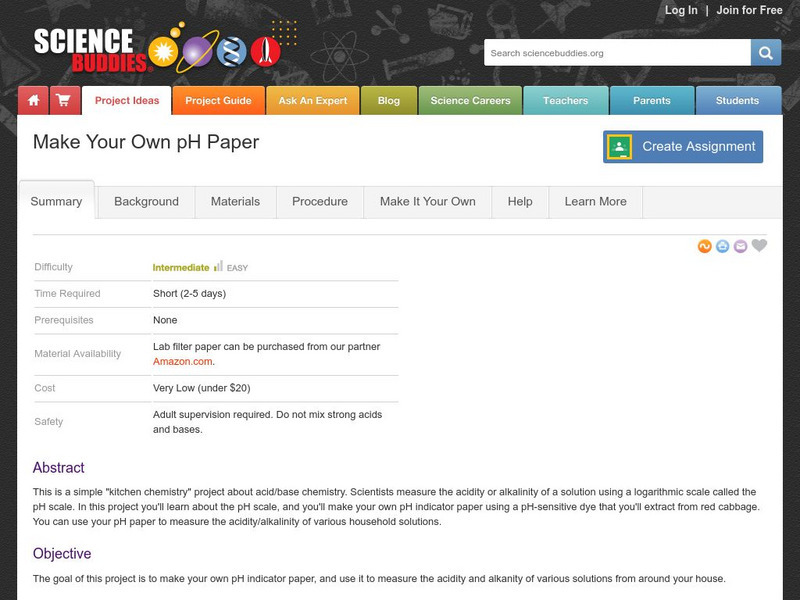Curated OER
The ABC's of Walter Anderson
Fifth graders examine how motifs, symbols, and ideas influence various pieces of visual art. They compare and contrast the work of Walter Anderson to pre-historic cave paintings and create a glue line print using motifs and symbols found...
Curated OER
The Reality of War
Students use research materials developed earlier. They synthesize data to formulate an argument for or against war. Students use their notes to address what the possible answers could be.
Curated OER
Numerical Determination of Drag Coefficients
Students create a video of an object falling with a drag. In this physics lesson, students calculate drag coefficient using data from Logger Pro. They calculate velocity and acceleration of the object.
Curated OER
Investigation of Timbre
Students design an experiment to analyze the timbre of different instruments. In this physics lesson, students analyze the missing quality in sound. They discuss their results in class.
Other
Altec: Project Based Learning Checklist
A project-based learning checklist and rubric generator helps keep students on track and allows them to take responsibility for their own learning through peer- and self-evaluation. Create checklists for writing and science projects,...
Other
Duke: Center for Inquiry Based Learning
Duke University has established the Center for Inquiry-Based Learning. It serves to enhance math and science lessons. Click on Resources for good examples of Inquiry-based lesson plans.
Cengage Learning
Cengage Learning: Project Based Learning: Egg Drop Experiment
Students are challenged to design a way to drop a raw egg from varying heights without letting the egg break. Creative thinking and evaluation of results are critical to the project.
University of California
Wise: The Web Based Inquiry Science Environment
[Free Registration/Login Required] WISE provides a wide range of science inquiry projects that address contemporary and traditional topics in earth science, the life sciences, physics, and chemistry. Work is done online, and teachers can...
Other
Rubi Star: Create Rubrics for Your Project Based Learning
RubiStar is a tool that helps teachers develop rubrics. After students have done the project and the rubric has been used to grade it, you can enter the data into RubiStar to determine which items are problematic for the class as well.
University of Illinois
University of Illinois: Inquiry Page: Learning Begins With Questions
What exactly is inquiry-based learning? Use this website to learn more about this unique learning style.
Other
What Is Rubistar? How to Make Rubrics
This online tool is designed for teachers to create rubrics that correspond with project-based learning activities.
PBS
Pbs Kids: Design Squad
This resource provides suggestions for projects that kids can design and engineer using simple materials.
Science Buddies
Science Buddies: Cabbage Chemistry
This experiment is for all the kids out there who love boiled cabbage. Even if you don't like cabbage, perhaps you will like this amazing color-changing liquid you can make with cabbage. You'll learn which solutions around your house can...
Center for Innovation in Engineering and Science Education, Stevens Institute of Technology
Ciese: K 12 Education Curriculum: Online Classroom Projects
This site presents projects for individual classrooms and collaborative projects that can be done with other classes or schools. Most of these are science projects.
PBS
Wnet: Thirteen: Ed Online: What Do Inquiry Based Lesson Plans Look Like?
Inquiry-based lesson plans are usually referred to as "facilitation plans," to help teachers remember their role as facilitator of learning, rather than fount of all wisdom. The notion also helps teachers structure lessons more loosely...
Other
University of Cincinnati: Project Step: Acid Rain
STEM Earth Science lesson in which students learn about measuring and determining the PH of a substance and the impact of acid rain on the environment due to changes of PH.
Edutopia
Edutopia: Room to Learn: Mystery Science Theatre
Read and see examples of how one physics teacher turns his classroom into a student-centered, project-based and fun place to be.
Buck Institute
Pbl Works: Pbl, Common Core and Next Gen Standards
[Free Registration/Login Required] This two-page article summarizes the alignment of PBL with Common Core standards for ELA and math, plus the Next Generation Science Standards. It is an excerpt from the BIE book, PBL for 21st Century...
Science Buddies
Science Buddies: Learning Your A, G, C's (And T, Too)
This is a project about the "molecular alphabet" of DNA. With just four "letters," it manages to keep track of the plan for an entire person, and keep a complete copy in nearly every cell. This project will help you start learning this...
Science Buddies
Science Buddies: Harmful Algal Blooms in the Chesapeake Bay
Harmful algal blooms occur when algae, which form the base of the ocean food web, grow in massive numbers and produce toxic or harmful effects on people, fish, shellfish, marine mammals, and birds. In this project you will learn how to...
Science Buddies
Science Buddies: Attack of the Killer Cabbage Clones
Do you like to watch outdated science fiction and cheesy horror movies? Many fictional tales of cloned organisms have been created based upon the scientific method for cloning animals or plants. In the real world, the cloning of plants...
Science Buddies
Science Buddies: Make Your Own P H Paper
In this "kitchen chemistry" project about acid/base chemistry, you will measure the acidity or alkalinity of a solution using a logarithmic scale called the pH scale. As you learn about the pH scale, you will have the chance to make your...
Science Buddies
Science Buddies: The Strength of an Electromagnet
Has anyone ever told you that you have a magnetic personality? Have you ever heard that opposites attract? These common phrases are both based on the properties of magnets and magnetic electricity. In this science fair project, learn how...
Science Buddies
Science Buddies: Now You See It, Now You Don't! Test Your Peripheral Vision
The survival of our ancient ancestors depended on their ability to use peripheral vision to find prey and to avoid predators. Almost everything we do-from riding a bike, to dribbling a basketball, to reading a book-depends on peripheral...






